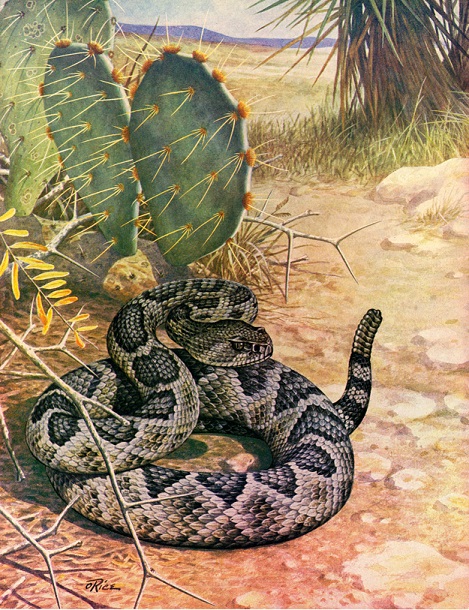Wildlife: Snake, Rattle and Run
Tuesday, October 29th, 2013[SFX—western Diamondback Rattling] Hear that? That’s the sound of a Western Diamondback Rattlesnake, the deadliest venomous snake in North America. You hear that sound when you’re out hiking, and you better rethink your next step.
06—The rattle serves the snake well in warning us that, ‘Hey, there’s snake over here; please mind your business and leave me alone.’
Of course, sometimes that’s hard to do when they’re hiding from you. Nevertheless, Andy Gluesenkamp, a Parks and Wildlife herpetologist, says rattlesnakes would rather leave you alone.
01—Unless you’re a mouse.
Right…well…assuming you’re not a mouse, you’re safe. Now here’s something you might not know—snakes other than rattlers…rattle.
14—A rattlesnake rattles its tail with a rattle on the end that makes a very distinctive buzzing noise that once you’ve heard it you’ll never forget it. However, a lot of snakes will rattle their tail in the same way, and will even back their tail up against some dried leaves or something to give it more effect.
So, we’ll call those: dishonest, lying snakes.
13—Snakes that do that a lot include the Texas Rat Snake; Bull Snakes which are another large non-venomous snake; King Snakes. A lot of other snakes that are otherwise harmless use this tail rattling to try to scare away would-be predators.
Find information on Texas snakes at the Texas Parks and Wildlife website.
Support provided in part by Ram Trucks. Guts. Glory. Ram…For Texas Parks and Wildlife…I’m Cecilia Nasti.



 Passport to Texas is a
Passport to Texas is a  Passport to Texas is made available by:
Passport to Texas is made available by: